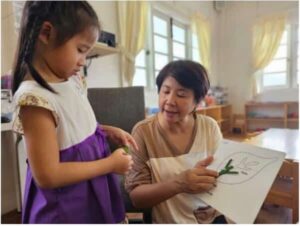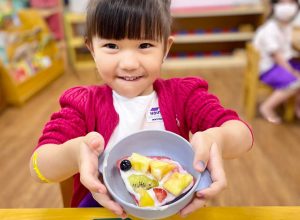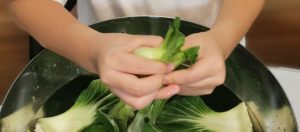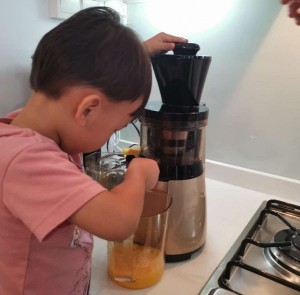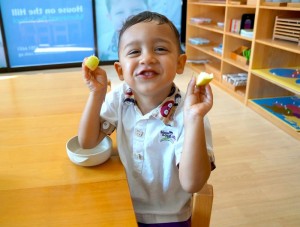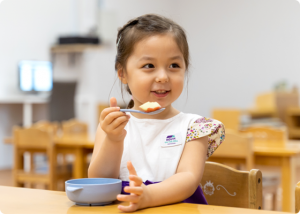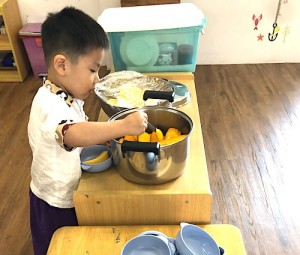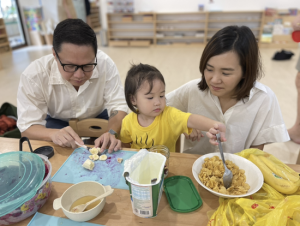
Montessori at Home: Mealtime Mathematics
Linking Numeracy to Everyday Life Mealtimes are a perfect opportunity to get a family together. Not only does it benefit the children with a sense of routine and security, but it’s also a great time to integrate numbers and math skills into everyday life for children of all ages. The preparation, serving and even eating can all play a part in a fun way to use counting and math skills in a way that a child can relate to. There are many ways to integrate numbers into meals. Some are as simple as just asking math questions while eating. Other numerical exercises could be in the exploration of making meals; timing how long things will cook, counting the number of items to put on a plate or how many plates or bowls there are. For babies, mealtimes are the perfect opportunity to talk about and show your baby basic ideas, like, more, empty, or full. You can also do some basic counting, “you’ve got two strawberries. One, two!” 4 Beautiful Locations Islandwide At House on the Hill, we strive to embody the true Montessori method and philosophy in every lesson and activity. Book A Tour Cooking When your child helps in the kitchen, preparing food and getting ready to eat, they take ownership of the meal. When you eat the meal with your child, talk about their flavours, smells, and textures, increasing vocabulary with words such as “spicy” and “crunchy.” Ask your child to be an “assistant chef” and stir, pour, and wash. Following directions for measuring and counting will enhance their math and listening skills. And observing what happens to food as it cooks or cools is science! Measuring Weighing out ingredients on a set of kitchen scales and counting the numbers can be exciting. Firstly, by teaching your child the differences between how various substances are measured, you can create the foundation to move on to more advanced quantities. Secondly, ask your child to count the ingredients or count the number of cups and teaspoons when preparing. Here are the ingredients to make a Mini Healthy Carrot Zucchini Muffins. 1 cup white whole-wheat flour 1/2 teaspoon cinnamon 1/4 teaspoon salt 1 teaspoon baking soda 3 tablespoons butter, melted and cooled 1/2 cup pure maple syrup or honey 1 large egg, beaten 1 teaspoon vanilla extract 1 cup finely grated zucchini 1/2 cup finely grated carrot 1/2 cup raisins To follow the recipe, click here. Setting the table Count the number of people going to eat. Choose and count the cutlery for each person. How many plates do we need? How many spoons do we need? Serving the food When teaching children maths skills through baking, try to frame your lessons by using scenarios. While it’s good to challenge your child’s arithmetic skills, throwing in a real-world scenario, will provide them with a better understanding of how these skills apply to later life. For example, Dad would like two muffins. Of the remaining muffins, split between me, you, and your sister, how many equal muffins will we each have? Using scenarios is a fantastic way to teach your child to think independently and apply their understanding of real-life mathematical problems. Let’s eat Slicing a pizza or pie is a way to introduce the concept of fractions. Halving or quartering bread and then putting the pieces back together is another good method of demonstrating division. Cleaning up Clearing away the dishes can be a great way of sorting various piles of utensils, pots and pans. How many spoons did we use? Who ate all their muffins? How many pieces of melon are left on the dish? TIPS By incorporating these tips, you can turn mealtimes into valuable learning opportunities that instil a love for math and cooking in your child! Adapt difficulty based on age and skill level. Start with simple counting and progress to more complex concepts like multiplication and division as children grow. Make it fun and engaging! Use games, songs, and storytelling to keep children motivated. Focus on the process, not just the answers. Allow children to explore and make mistakes, learning from the experience. Celebrate successes and encourage effort. Make mealtime math a positive learning experience. Babies (6 to 12 months): Introduce basic concepts like “more,” “empty,” and “full.” Count simple objects like fruit or utensils. Young Children (1 to 3 years): Help in the kitchen with age-appropriate tasks like stirring, pouring, and washing. Measure and count ingredients, discussing volume and units. Set the table, counting plates, utensils, and chairs. Older Children (3 to 6 years): Solve real-world math problems in cooking scenarios, like dividing cake slices or converting recipe quantities. Learn fractions by slicing pizza or pie. Practice sorting and counting while cleaning up. From learning maths skills through measuring and converting, to understanding scientific topics, the world of cooking presents the perfect opportunity for your child to explore, learn and grow. Start your journey of cooking and baking with your little one today!


